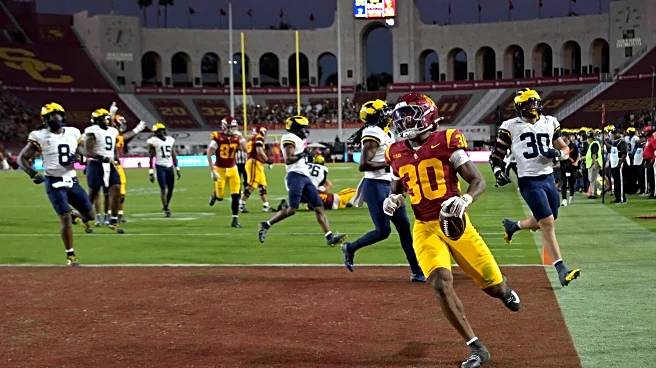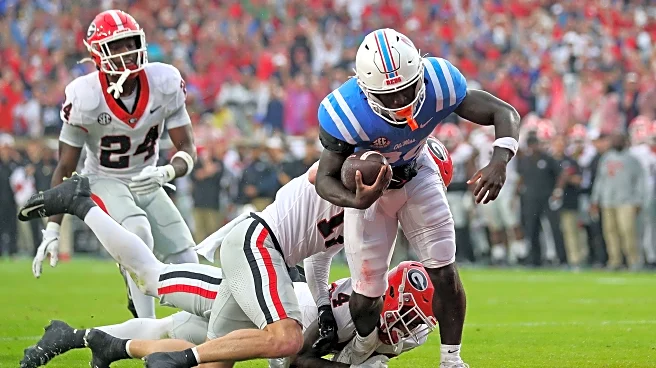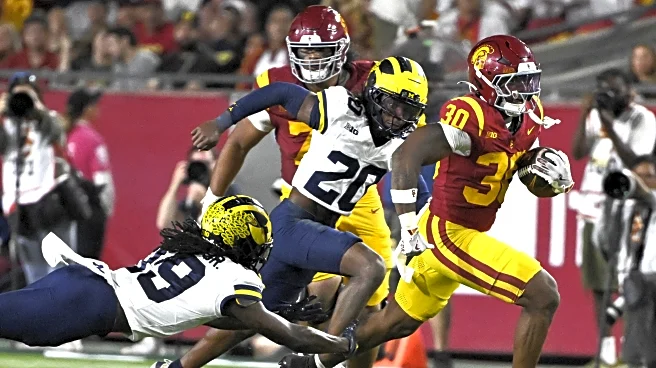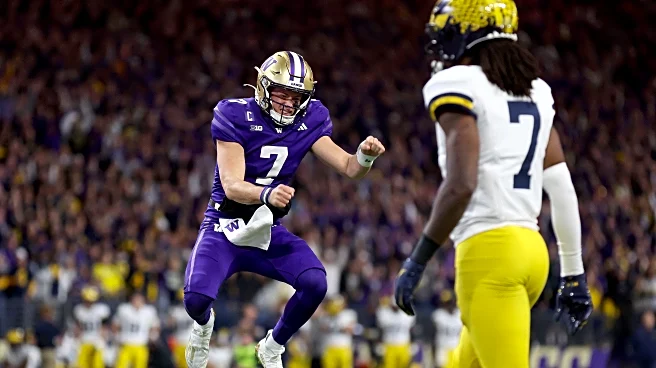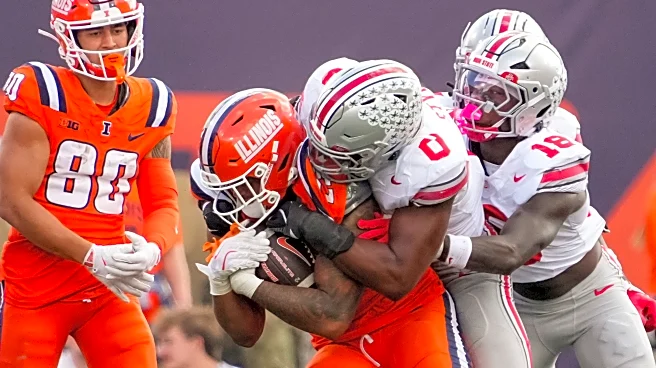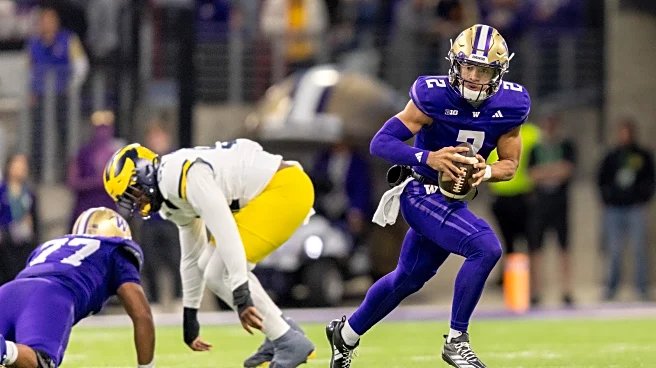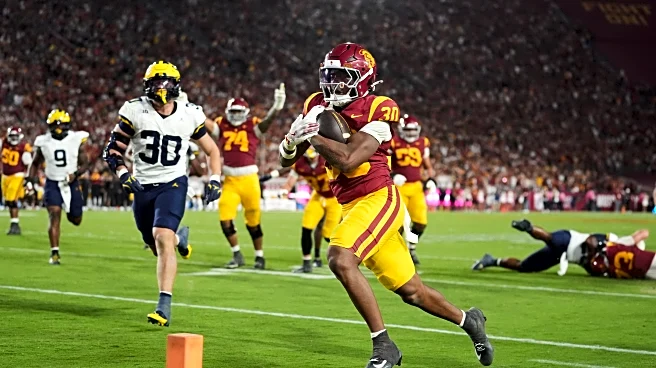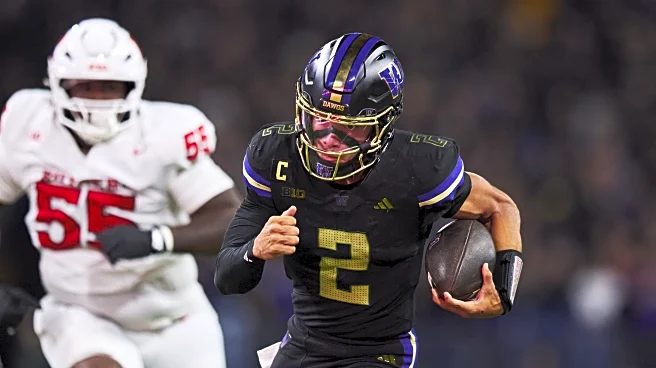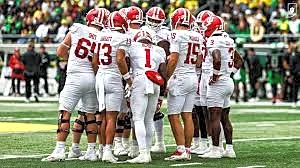Here are the main strategic levers an offense uses to “dominate” a defense, especially a high-end defense like Michigan’s (or one perceived to be):
When an offense dominates a high-level defense like Michigan’s,
it usually comes down to leveraging several key schematic principles that stress defenders and create mismatches. One of the most effective tools is pre-snap motion and shifts, which move defenders around, force them to adjust run fits, and create confusion in coverage.
These motions can reveal the defense’s intentions and expose weaknesses such as light boxes or poor matchups. Another critical element is the use of RPOs and read-options, allowing the quarterback to make post-snap decisions based on defensive movement. If a linebacker or safety overcommits to the run, the quarterback can pull the ball and throw, forcing defenders to hesitate and play slower.
Offenses also rely heavily on misdirection, counters, and misleads, using play fakes, pulling linemen, or jet motion to make defenders take false steps or lose gap integrity, which opens up cutback lanes and big-play opportunities. Through inside-out sequencing, offenses start by attacking the interior with power and zone runs, drawing defenders into the box, before threatening the perimeter with sweeps, play-action, or screens. This keeps the defense guessing and unable to key on one area.
Another important lever is tempo and scripting—running plays at varying speeds or using early scripted sequences can prevent the defense from adjusting, disguising, or substituting personnel. Alongside that, flexible protection schemes such as slide protections, max-protect looks, and quick-release concepts neutralize blitzes and stunts, giving the quarterback time and opening space for receivers and backs. Finally, matchup exploitation is central to any successful game plan.
Offenses use formation and motion to isolate less athletic defenders—often linebackers or safeties—against faster receivers or backs, creating one-on-one advantages. When all these schematic levers work in sync, even elite defenses struggle to maintain discipline, and the offense can dictate tempo, spacing, and rhythm throughout the game.
Reported outcomes and clues
- USC gained 489 total yards; Michigan allowed 224 rushing yards.
- Michigan recorded zero sacks in that game — the pass rush was ineffective.
- USC converted 50% of third downs.
- Michigan had 14 missed tackles.
- A stunning play: USC converted a 3rd-and-25 via a 49-yard run (breaking containment, defensive alignment off)
- The line of scrimmage was outmanned: Michigan was “severely outplayed on the line of scrimmage”.
Also, the stat lines for that game show:
- USC: 36 rushes for 224 yards
- Michigan: 31 rushes for 109 yards
- USC had 68 plays, Michigan had 57 plays
- Time of possession tilt to USC ~ 33:22 vs Michigan ~ 26:38
These numbers suggest USC was doing damage both on the ground and in the pass game, sustained drives, and winning in the trenches and tackling.
USC success vs. Michigan
- Attack the interior, force the defense to overcommit, then work outside
Because Michigan gave up so many rushing yards, USC used gap-run schemes to test the defensive line and linebackers. Once Michigan’s front seven had to lean into run support, USC could threaten to stretch toward the edges or with RPOs. - Use misdirection, counters, and cutbacks
Big rushing yards often come when defenders are pulled one way and then the play cuts back. The 49-yard 3rd-down run indicates that Michigan’s pursuit, containment, or alignment was thrown off. USC used counter to really exploit Michigan’s run defense. - Leverage QB reads/RPOs to freeze defenders
USC used RPO plays (or at least had a threat of QB run), and defenders became conflicted. If a linebacker or safety cheats toward the run, you throw; if they drop or stay, you run. That hesitation in the defense is gold. - Maximize protection, delay pressure, and neutralize blitzes
Because Michigan got zero sacks, USC’s protection must have been solid. They used slide protections, chip blocks, or quick-release route concepts (e.g. short throws, screens, check-downs) whenever Michigan showed blitz or pressure. - Scripted early drives/tempo to exploit soft spots before adjustments
Many offenses script their first 10–15 plays knowing the defense has limited time to adjust. USC likely ran a strong early script to test Michigan’s run fits and coverage matchups. Also, the tempo or cadence changes can prevent the defense from substituting or aligning perfectly. - Isolate matchups in space
USC’s receivers and backs could take advantage of Michigan’s second-level defenders or safeties. If Michigan had to bring linebackers into coverage, USC could send a back or a receiver to exploit that matchup. The pass-yielding numbers in the game (USC 265 passing yards) suggest Michigan’s coverage was punished. - Sustain drives, convert third downs, wear down defense
Converting 50% of third downs shows USC’s offense didn’t settle. They likely kept moving the chains (a mix of runs, passes, intermediate routes) so Michigan’s defense couldn’t rest or rotate. The cumulative effect of long drives wears down front-line defenders.
How Michigan’s defensive scheme may have failed
Even the best schematic offense can fail vs a disciplined defense, but in this case, based on film, Michigan’s struggles weren’t just about bad plays — they were also scheme-related or caused by being forced into reactive positions.
Here are likely failure points on Michigan’s side:
- Poor tackling/missed angles: 14 missed tackles is a lot. Even if your scheme is tight, missed fundamentals kill your defense.
- Inability to generate pressure /pass rush breakdowns: Without pressure, USC’s QB and receivers had time. Michigan didn’t convert that schematic edge into execution.
- Overcommitment to the run or misread reactions: USC may have baited Michigan into overpursuit or misalignment, then punished with cutbacks or play-action.
- Fatigue on the front lines/ personnel rotation: If USC sustained long drives, Michigan’s defensive front could have worn down, losing leverage on blocks and gap control.
- Rigid assignments/inability to adjust in-game: USC adjusted mid-game (e.g. adding screens, changing run directions) and Michigan’s defense couldn’t counter quickly.
- Suboptimal matchups in coverage: If Michigan put linebackers or safeties in coverage on faster receivers or backs, USC likely schemed to target those mismatches (e.g. crossing routes, drag routes, option routes).
Coach’s takeaway
From a coach’s perspective, USC winning that way means their offense likely executed a smart game plan: attacking you where you’re weakest, using deception, protecting well, forcing you into uncomfortable spots, and sustaining drives to keep your defense on its heels.
If Michigan had a weakness—susceptibility in run defense, trouble generating pass rush, or tackling breakdowns—that becomes a roadmap for USC’s offensive coach.
